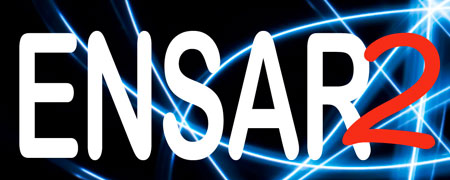TecHIBA: Technologies for High Intensity Beams and Applications
WP Leader: Giuseppe Verde
Deputy: Faiçal Azaiez
This proposal is based on a large initiative called ECOS endorsed by NuPECC. This initiative accessed the capability offered today in Europe of stable-ion beam facilities and their high-intensity upgrades to cope with the needs of scientists to fully exploit unique physics cases in nuclear structure, reactions, astrophysics and applications. Within ENSAR2, a number of the foreseen TAs will be delivering stable-ion beams. The TecHIBA-JRA proposal joins efforts among the large European scientific community in order to provide support to these TAs both in fundamental research and activities related to accelerators and applications. The TecHIBA-JRA will ensure a breakthrough in all aspects related to the production and use of high-intensity heavy-ion beams. It is also of full benefit to future projects of high-intensity stable-ion beams such as at GANIL, Huelva and GSI. The TecHIBA-JRA consists of 6 tasks presented below.
TASK 1. Improvement of Superconducting Accelerating Cavities – ISACA (CNRS)
The aim of ISACA is to study and build an innovative set-up to improve, quality-wise and safety-wise, the surface polishing of superconducting cavities.
TASK 2. Radio-Isotopes for Therapy and Medical Imaging – RITMI (CERN, ILL)
RITMI focuses on new production technologies for medical radioisotopes that cannot be produced with conventional methods at medical cyclotrons.
TASK 3. NEW Detection Opportunities for Magnetic Spectrometers – NEWDOMS (INFN)
The purpose of NEWDOMS is to develop a prototype of a PVT+PPO scintillator, interface it with the fast stretcher and install it in coincidence with a magnetic spectrometer.
TASK 4. Identification of Low-Energy Radioactive Ions – ILERI (CEA)
In this activity, we propose to focus on the use of silicon detectors to detect and measure the decay particles. The first task aims at the design of a detection set-up for the atomic signature through X-ray detection, while the second one aims at identification of the nuclear decays, notably through an analysis of signal shapes.
TASK 5. Generic Electronics Systems – GES (CEA)
This task, performed within the skilled team which has designed the MATE and AGET chips, aims at the design of a multi-channel very front-end ASIC optimised for silicon detectors, including the preamplifier and shaper stages with configurable parameters, and with a dynamic-range capability of 14-15 bits to be split on two 12 bits sub-ranges.
TASK 6. TecHIBA coordination – TecHIBA-COOR (CNRS)
Coordination of the new JRA activities and continuation of some of the activities within the ECOS network that has been launched within ENSAR.

